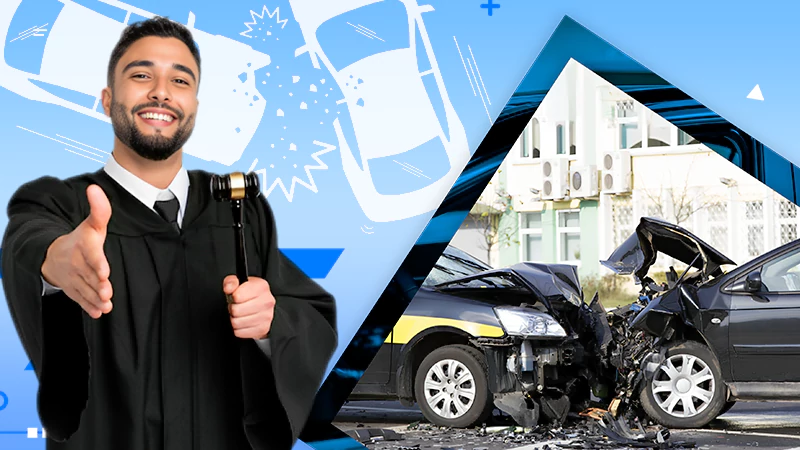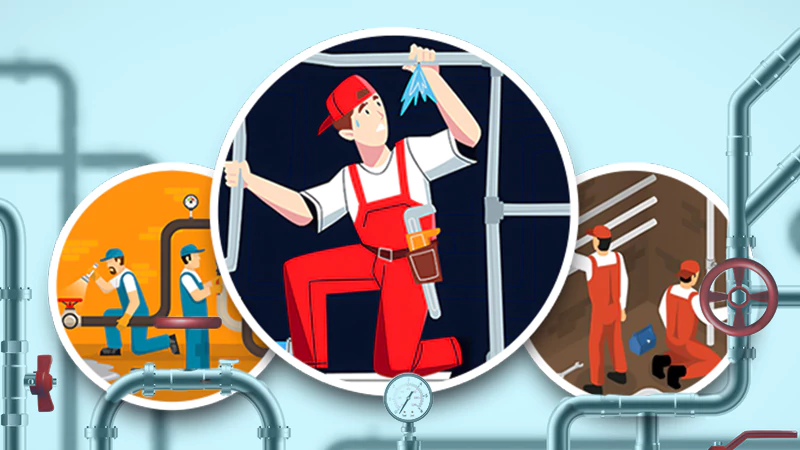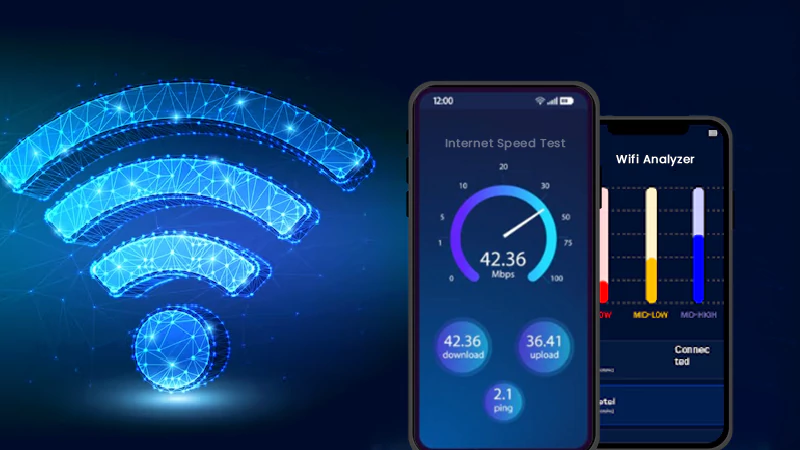Everything You Should Know About Headlamps for Cars
Introduction
Driving at night can be an exciting experience, but it can also be a challenge when your car’s headlights fall short on brightness. That’s where high-power LED headlamps come to the rescue. In this guide, we’ll illuminate the top 7 LED headlamps that are lighting up the roads for car enthusiasts in India.
Headlamps are one of the basic elements of your automobile. It is often known as headlights that emit an intense light from your automobile or vehicle. The headlamps for cars at boodmo meet your every demand.
Headlights vary according to the type of vehicle. The size, intensity, and shape also matter if you are looking to add a design element along with efficient functionality. In this article, we will get to know everything about headlamps. So, here we go!
Types of Headlamps
The kind of headlights you want on your automobile depends on your driving habits and preferences. You may want to invest in a vehicle with stronger and brighter car lights if you often travel in low-light areas.
Halogen, HID, and LED headlights are now the most trendy options. The vast majority of vehicles on the road use halogen vehicle lights. These lights are cheap, simple to replace, and widely deployed. They generate greater heat and require more power than standard headlight bulbs.
HIDs and LEDs are gradually replacing halogen headlights. Because they are more durable and provide more light than halogen bulbs. These new lights for vehicles quickly become a selling feature for modern automobiles and other vehicles.
Since its introduction in the early 1990s, HID headlights have been available for “high-end” automobiles. However, HIDs may cause a significant amount of glare, which may be an issue for drivers around you. As technology has progressed, laser lights have replaced conventional lighting on luxury vehicles.
LEDs are a compromise option for lighting. Several manufacturers employ them, including Audi, Nissan, and Hyundai. They are not as powerful as HIDs, but they never run out of juice, and their compact size makes them ideal for use as a light for vehicles.
It has given automotive designers some margin regarding the style and form of the lights they may use on their cars.
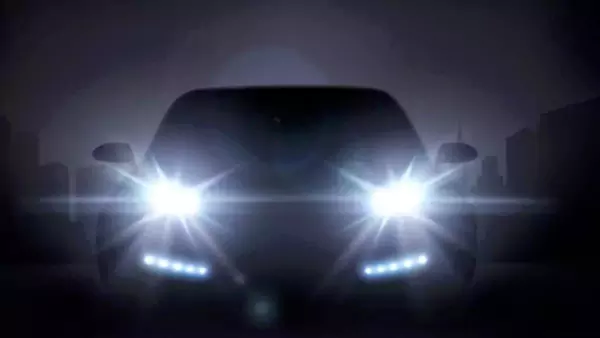
Why Upgrade to LED Headlamps?
Brightness Beyond Halogens
When focusing on brightness, LED headlamps outshine traditional halogen bulbs. The sheer lumens they emit illuminate the road ahead, enhancing visibility and safety.
Energy Efficiency
LEDs are energy-efficient, which means they consume less power than halogens. This not only reduces strain on your car’s electrical system but also saves you money on fuel.
Longevity and Durability
One of the standout features of LED headlamps is their impressive lifespan. They can last significantly longer than halogens, reducing the need for frequent replacements.
An eye-opening fact is that the number of car accidents is due to neglect in using good quality headlamps as seen in the graph below.
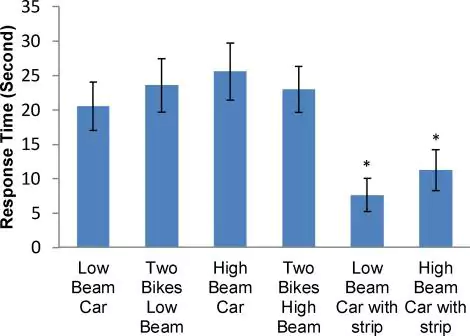
How to Choose the Perfect LED Headlamp?
Lumens Matter: Understanding Brightness
Lumens are the measurement of brightness in any small or large vehicle. Consider your driving conditions – do you need a high lumen output for pitch-black highways, or will a moderate level suffice for city driving?
Beam Patterns: Flood vs. Spot
LED headlamps offer different beam patterns. Flood beams are ideal for city driving, while spot beams are designed for long-range visibility on highways.
Installation Ease
Choose LED headlamps that are easy to install. Some models come with plug-and-play features for a hassle-free upgrade.
Compatibility with Your Car
Ensure the light you select is compatible with your car’s make and model. Compatibility issues can be avoided by checking specifications and seeking professional advice if needed.
Brightness of Headlights (in Lumens)
As measured in lumens, a light source’s luminous flux is the sum of its luminous flux in all directions. Lights with higher lumen counts tend to use more power than their less powerful counterparts.
So, the more lumens a light has, the brighter it is. Most of the time, yes; sometimes, no. The effectiveness of those lumens depends on how efficiently the vehicle manufacturer can concentrate and channel the light.
Distancing of Headlights:
The primary function of a headlamp is to direct light in a specific direction. Some tests measure the usable range (in meters) of a vehicle light. The beam distance is how far it can reach an object you wish to light up, whereas the lumens measure how brilliantly its lights are at its source.
Time for Headlight Use:
This is how long your light will shine from a wholly charged state. There has been a recent shift in the headlamp industry’s measurement standards. Thus, you may encounter some ambiguity when comparing different models directly. Historically, manufacturers have evaluated how long a vehicle light can shine a suitable beam (equivalent to the full moon’s) at a distance of 2 meters.
The new criteria for when a light’s runtime expires is when its brightness has dropped to 10% of its initial value. Previously, a vehicle light with 350 lumens may have 40 hours of battery life. However, the identical runtime under the new standard may only be 2 hours. (It will still light up the sky for another 38 hours but at a lower intensity.)
Consequently, if you come across two headlights that look identical save for a significant run duration variance, one may not have been tested under the new standard yet.
Headlamp Weight:
Most headlamps with batteries weigh under 7 ounces and are around the same size. Before looking at some more powerful versions, you won’t notice any significant changes in the size and weight of the locomotive brightness device. A few of them even have those cumbersome top straps and extra battery packs. These designs are more suited to specialized activities like climbing than general adventuring.
Headlamp Brightness Levels/Modes:
Most spotlights have two brightness settings: high and low. Others may provide as many as three distinct stages.
Strobe (or Flash) mode resembles an automobile’s emergency blinker. Some models even include an option between moderate and high flash speeds.
Camp chores and simple nighttime hikes are best accomplished in low mode.
For the sake of variety, several models provide a mid-range option.
If you need or like a great deal of extra illumination, High (or Max) is the setting for you.
Fewer and fewer devices include Boost (or Zoom). This function lets you shine a brighter light for a shorter time—say, 10–20 seconds—to investigate the source of a rustling sound in the adjacent bushes. Please be aware that this setting has a significant impact on battery life.
EXPERT ADVICE
Headlight alignment problems can be detected if the illuminated area in front of your car always seems too low, if the pooled light flickers, or if other drivers flash their lights at you even when you run low beams.
Additional Headlamp Features:
Regulated Output
Regulated headlights maintain a constant level of intensity throughout the life of the batteries rather than decreasing gradually. This is an excellent quality that has garnered much-deserved acclaim.
The negative is that a controlled headlamp’s light might go off suddenly if the batteries die. It might put you in a bind if you need to change batteries without light. If your unregulated vehicle’s glare starts to fade, you know it’s time to replace the batteries.
Red Light Mode
There is a red light setting on many flashlights. Red light is helpful at night because it does not cause our pupils to constrict as white light does.
Water Resistance
All headlights you will find at REI are weatherproof to varying degrees. They are also resistant to minor shocks and falls.) Only a select handful can stay submerged for any length of time.
Tilt
The headlight unit’s vertical adjustment is a welcome feature. You can direct the light precisely where you need it to go. This is extremely helpful when required during any emergency.
Push-Button Controls
Try the buttons to see how the headlamp cycles through its settings (high to low, or vice versa) while trying them out in a shop. Locking switches are also available to ensure the light doesn’t turn on inside the rucksack.
Batteries
Since lithium batteries perform better than alkaline batteries in cold situations, vehicle lights compatible with lithium batteries are suitable for winter use. Also effective with headlights in cold weather are rechargeable nickel metal hydride (NiMH) batteries.
Remember that rechargeable batteries gradually lose charge while not in use, so having some
alkaline backups on hand is a good idea.
External Battery Packs, Top Straps
Some high-output car lamps have the battery pack on the back of the headband and connect it to the light via a thin connection. It’s bulky, but it takes some of the pressure off your forehead. Some types have top straps (sometimes detachable) for extra support.
Installation Tips
If you’re considering upgrading to LED headlamps, follow our step-by-step guide for a hassle-free installation experience. It’s a DIY project that can make a world of difference in your night driving.
Maintenance and Care
To extend the lifespan of your LED headlamps, keep them clean, and regularly inspect for any signs of wear or damage. Proper maintenance can ensure they shine brightly for years to come.
Conclusion:
You can tell we’re huge auto fans since we’re interested in even the most minor, least-noticed details.
Faqs:
Ans: A new light system may improve your driving experience. Modern vehicles use LEDs and HIDs to improve nighttime and bad-weather vision. Bulb replacements are less frequent since they last longer. Upgrades like adaptive lighting systems automatically respond to road conditions and incoming vehicles, improving safety.
Ans: Car headlight laws vary by area. The US Federal Motor Vehicle Safety Standards regulate headlamps. These standards define its design, brightness, and aim. Knowing your state’s laws is relevant to ensure your products conform.
Ans: Preventing headlight troubles needs frequent maintenance. Seal and avoid fractures in its casing to prevent humidity. Check the seals for wear and damage on it. Park your automobile in shady places and use headlight lens protectants or repair kits to remove oxidation to avoid yellowing. Cleaning and polishing regularly ensures clarity and prevents dampness and discoloration.
Exploring Common 2-Story Houses Energy Usage Patterns and…
How Long Does It Take to Obtain An…
The Secrets Behind High-Performance Racing Windows
Co-Parenting Strategies for Divorced or Separated Parents in…
How Auto Lawyers Help Victims of Distracted Driving…
How Can an Attorney Help in a Trucker…
What is the Rule of Thumb for Pipes?
Best DVD Rippers for Windows & Mac: Free…
Reducing the Impact of Unexpected Construction Expenses
8 Ways to Improve Wi-Fi Speed and Stability…
What Information Can Be Gleaned From a Funnel…
Essential Strategies to Make Hotel Management Easier





